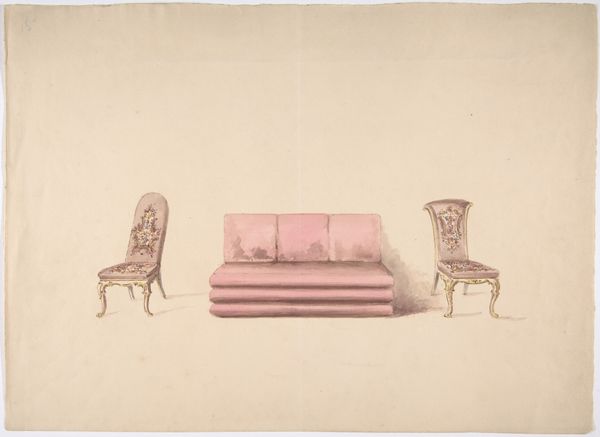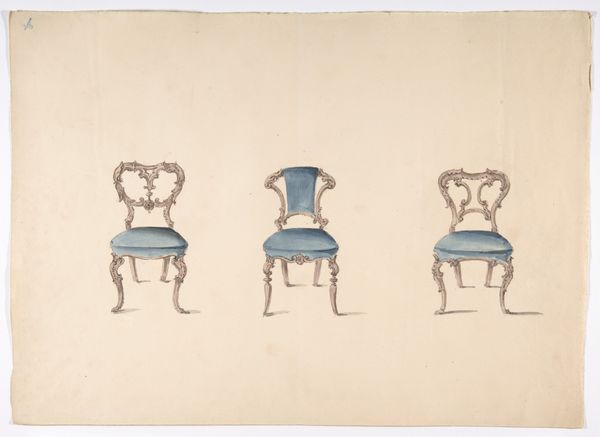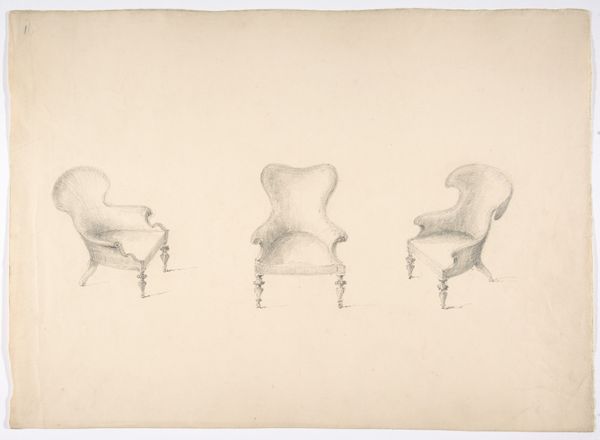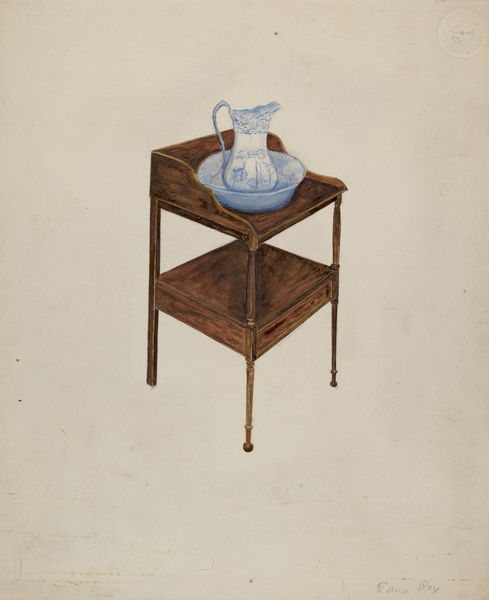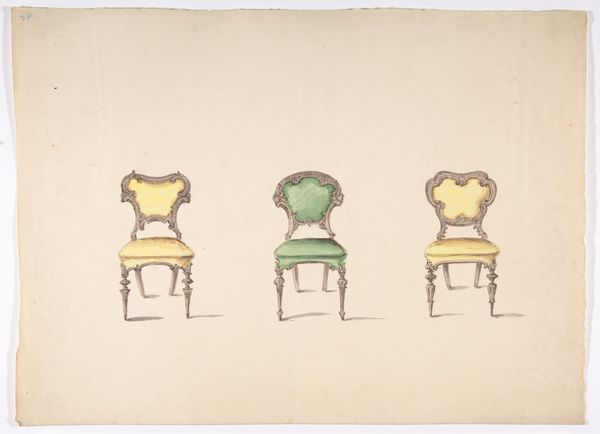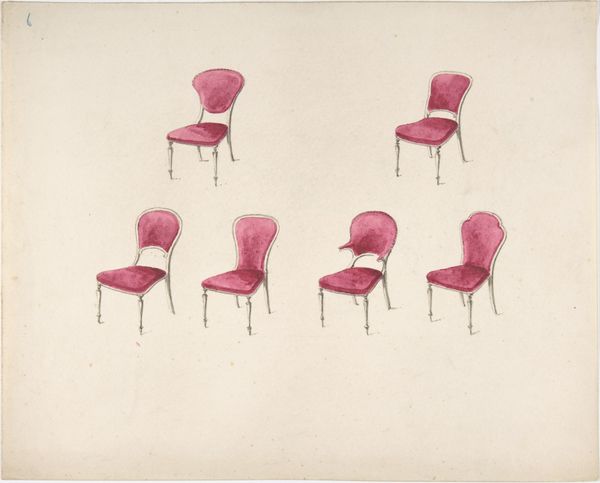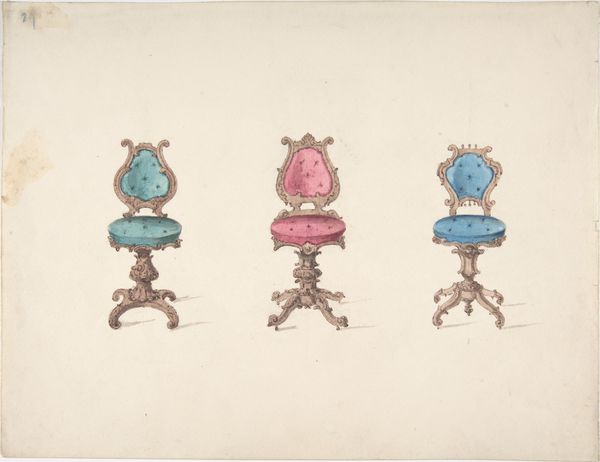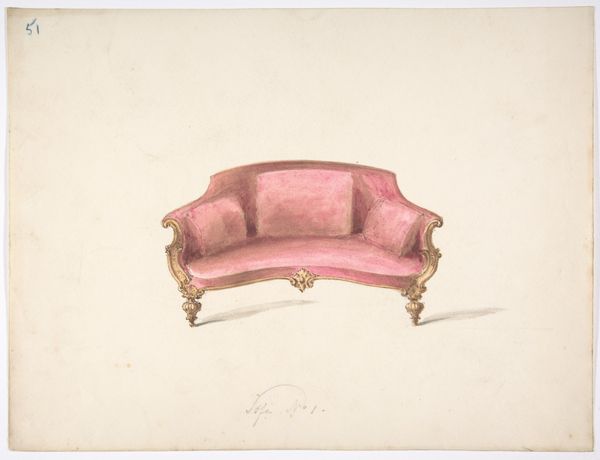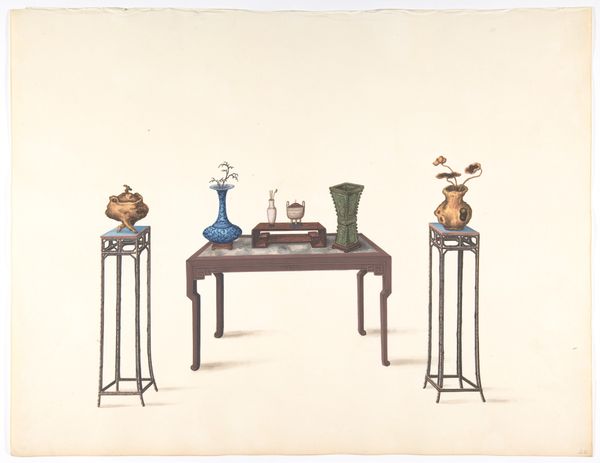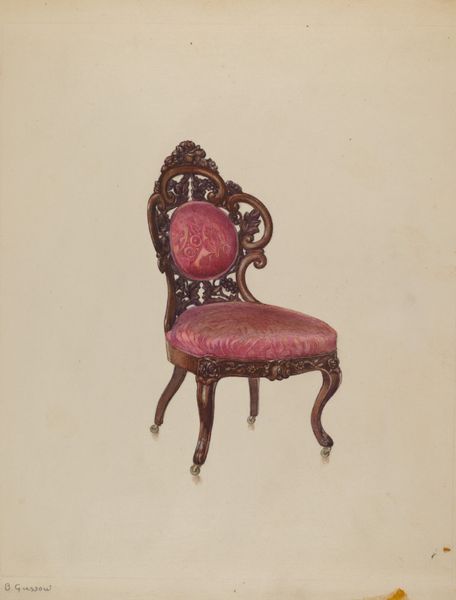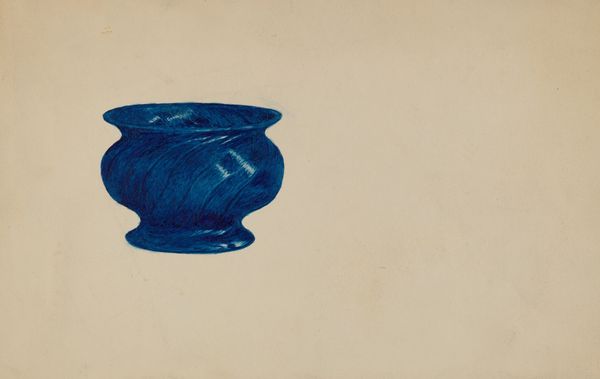
Design for a Round Pink Sofa and an Armchair and a One-armed Chair 1800 - 1850
0:00
0:00
drawing, print, watercolor, pencil
#
portrait
#
drawing
# print
#
watercolor
#
pencil
#
watercolour illustration
Dimensions: sheet: 10 13/16 x 15 1/16 in. (27.4 x 38.2 cm)
Copyright: Public Domain
Editor: So, here we have "Design for a Round Pink Sofa and an Armchair and a One-armed Chair," dating from somewhere between 1800 and 1850, currently housed at the Met. It's a drawing – pencil and watercolor, maybe even a print involved. There's something kind of charmingly absurd about the imagined pink furniture. What strikes you about this piece? Curator: What jumps out at me is the material reality of early 19th century design. Pink, especially then, speaks volumes about access to dyes, the labor involved in textile production, and ultimately, the social aspirations of those who could afford such furnishings. These weren't mass-produced items; someone envisioned, drew, and, crucially, someone would have been commissioned to *make* this. Do you think about the economics of this design? Editor: Definitely, I guess the question is *who*? Were these designs for the aristocracy? Or perhaps a rising merchant class seeking to emulate them? Does the choice of watercolor as the medium suggest something about the design's intended audience or purpose? Was it purely aspirational, or a practical blueprint? Curator: Precisely. The very materials shout class. Think of the pigmens and paper that would’ve had to be procured. Even the pencil—its graphite and wood—speaks to industrial networks and commodity exchange. These considerations shift our understanding from mere aesthetic appreciation to a materialist analysis of social stratification, consumption, and the very act of creation. What do you think the choice of subject indicates? Does this offer some window into 19th-century values or class aspirations? Editor: It’s almost as though these domestic items are posing for a portrait, isn't it? They really put labour, material and economy in a different perspective. Thanks, that makes me see the design in a different light. Curator: Indeed. By focusing on these elements, we unearth hidden narratives about production, consumption, and social hierarchies embedded within seemingly simple designs.
Comments
No comments
Be the first to comment and join the conversation on the ultimate creative platform.

